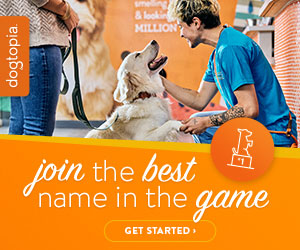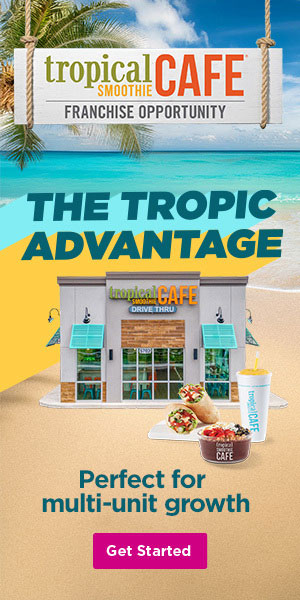"No Problem" = A Big Problem in Customer Service
Editor's note: Kudos to customer service guru John DiJulius, founder of The DiJulius Group, for pointing out an article on his blog that sheds light on the commonly used automatic response, "No problem." Somehow, it had been bothering me in a subtle way for years. Unfortunately, after reading the original blog by Joe Schumacker, it now bothers me more: I'm hearing it just about everywhere, especially from the younger set. (Full disclosure: I've pointed this out several times to cashiers and waiters, mostly receiving blank, uncomprehending stares in return.) So be warned, reading this article may alter your customer experience forever. My hope is that it will inspire you to tell your front-line staff to "Cut it out!" Here's the original post by Joe Schumacker:
No Problem, Big Problem
The greeting before a meeting is an example of an interpersonal auto-response. We all do it many times a day. Each of us has our own favorite phrases such as, "How is it going?" or "How are you?" or simply, "Hello." We also have standard phrases we use at the end of an interaction such as, "Take care" or "Nice seeing you" or simply "Good-bye." When closely examined, most are meaningless phrases and certainly not intended to engender a response.
So why are personal auto-responses important? Quite simply, each person you come in contact with will use your auto-response to help form perceptions and opinions. This is very important with transactional interactions in a business environment where a staff member may have more than 100 passing interactions with customers on a single shift. How the interaction is handled goes a long way in determining how the customers feel about the business.
A company with a strong customer service culture will train the proper auto-response for their staff members. A company with a weak customer service culture will either not pay attention to how a staff member interacts in a business environment or they will overly script the interaction so that it takes all personality out of the exchange. Either creates a negative impression with the customer.
The "king of the hill" in getting it wrong is when the phrase "No problem" or "Not a problem" is used at the conclusion of an interaction, typically after the customer says, "Thank you." In a transactional interaction "No problem" is a problem on two levels. The stated "Thank you" is an acknowledgement that service was provided. It is not an apology for disrupting the tranquility enjoyed by the staff member prior to the interaction. The "No problem" auto-response places the staff member's comfort ahead of service to the customer. Expanding the auto-response for full meaning, "No problem" becomes: "You are not creating a problem for me." As a customer I want to feel that my interests are first and foremost in the mind of the staff member, not that I may have inconvenienced a staff member by being a customer.
The second problem with "No problem" is that it consists of two negative words. In this case the customer is inferring from the auto-response that in fact the staff member has a problem with providing service. Stop reading for a moment and say the phrase "No problem" out loud. Say it again with a pause of one second between words. Say it a third time, this time with a two-second pause between words. In the last case it should be clear that the customer is being told No and that there is a Problem.
Why run the risk of having your customer end an interaction with a negative impression? Chick-fil-A is the best example I know of how to get it right. Actually, Chick-fil-A gets customer service right on a number of levels. The opening of the interaction is a pleasant, "Hello, may I help you?" The post "Thank you" closing is not "No problem" but rather "My pleasure."
As a second exercise, repeat both phrases - "No problem" and "My pleasure" - using the same cadence and tone of voice. Which one makes you feel better? Which one would make your customer feel better? If you are really into testing this concept, you can videotape customer interactions. Watch for the slightest difference in facial expression between the "No problem" and "My pleasure" interactions.
Over the next five days, make note of five times the auto-response "No problem" is spoken to you, and also note five times you realize you say the phrase yourself.
Is this just little stuff? Possibly, but great customer service is all about the little stuff.
Joe Schumacker is chair at Vistage, a professional training and coaching firm, owner of SpareZ, president of the Bowling Proprietor's Association of America, and CEO of Schumacker & Company. Reach him at [email protected].
Share this Feature
Recommended Reading:
| ADVERTISE | SPONSORED CONTENT |
FRANCHISE TOPICS
- Multi-Unit Franchising
- Get Started in Franchising
- Franchise Growth
- Franchise Operations
- Open New Units
- Franchise Leadership
- Franchise Marketing
- Technology
- Franchise Law
- Franchise Awards
- Franchise Rankings
- Franchise Trends
- Franchise Development
- Featured Franchise Stories
| ADVERTISE | SPONSORED CONTENT |








 The franchise listed above are not related to or endorsed by Franchise Update or Franchise Update Media Group. We are not engaged in, supporting, or endorsing any specific franchise, business opportunity, company or individual. No statement in this site is to be construed as a recommendation. We encourage prospective franchise buyers to perform extensive due diligence when considering a franchise opportunity.
The franchise listed above are not related to or endorsed by Franchise Update or Franchise Update Media Group. We are not engaged in, supporting, or endorsing any specific franchise, business opportunity, company or individual. No statement in this site is to be construed as a recommendation. We encourage prospective franchise buyers to perform extensive due diligence when considering a franchise opportunity.